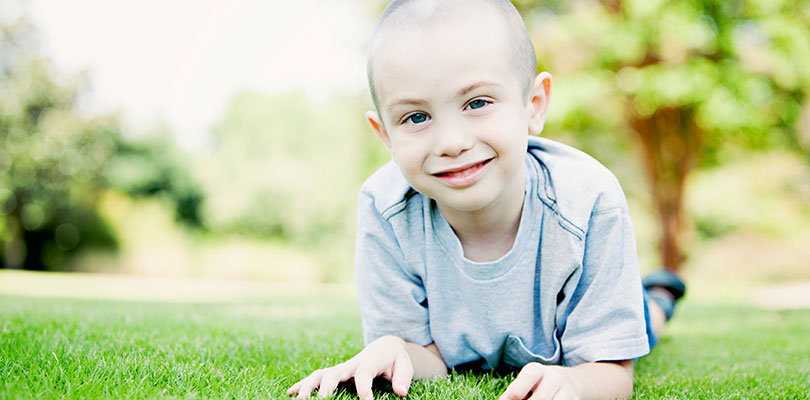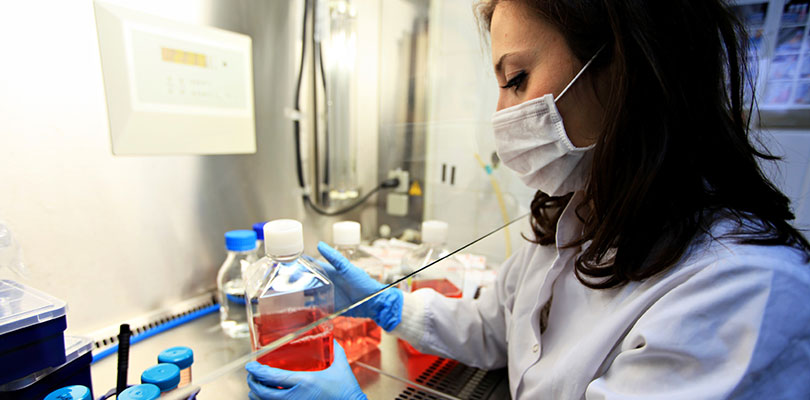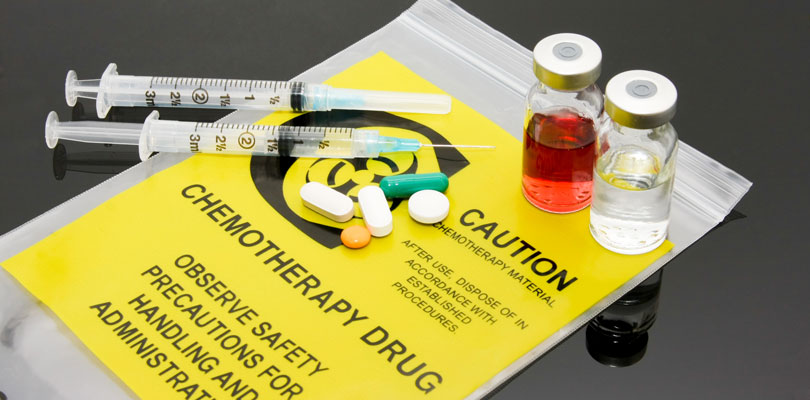Photo Credit: jessicaphoto / iStockPhoto.com
Facts, Symptoms, and Prognosis for Common Childhood Cancers
Many people think of cancer as a disease that happens later in life, and for good reason — your chances of developing many types of cancer absolutely rises with age. However, certain types of cancer tend to start in young cells, and at younger ages.
Over 15,000 children in the United States will receive a cancer diagnosis this year.
Fortunately, childhood cancer is not the grim sentence it once was: in the 1970s, just over half of child cancer patients survived for five years or more, but by 2010 the five-year survival rate had reached 80 percent.
However, as with all cancers, the earlier you can spot the symptoms and begin treatment, the better the outlook. The first step is to know which types of cancers typically develop and children, and when to watch for signs.
Blood Cancers
The most common type of cancer to develop early in life is leukemia, which is a cancer of the bone marrow and blood. About 30 percent of childhood cancers are some sort of leukemia, and can be divided into subcategories.
The two leading types of childhood leukemia are acute lymphocytic leukemia (ALL) and acute myelogenous leukemia (AML).
Blood cancers stem from a problem in the bone marrow, which is where red blood cells, white blood cells, and platelets are made. Most cases of leukemia begin in the white blood cells (the seeds of the immune system), and as these cancerous cells grow, they begin to crowd out healthy cells in the bone marrow fairly quickly.
Soon after, the mutated cells spill out into the bloodstream, where they can travel to distant areas of the body.
Cancer can be described as acute (fast-growing) or chronic (slow-growing). Almost all of childhood leukemias are acute, which means they tend to spread quickly and symptoms can escalate accordingly.
Childhood leukemia symptoms can vary widely depending on which cells are affected, and how far the cancer has spread, but some of the most common changes include:
- Fatigue
- Weakness
- Dizziness
- Headaches
- Shortness of breath
- Pale skin
- Frequent or ongoing infections
- Fever
- Easy bruising or bleeding
- Severe nosebleeds
Many of these symptoms can also point to many conditions that are much less serious than leukemia. Low red blood cell counts (anemia) can be uncomfortable, but is often easy to remedy, and while long-lasting colds and flus can point to abnormal white blood cell production, it certainly isn’t the only explanation.
However, it’s always better to be safe than sorry: if any of these troubling symptoms get worse or won’t go away, it’s time to visit the doctor.
Immune System Cancers
The lymphatic system is responsible for filtering out toxins and fighting off dangerous intruders. This is also known as your immune system. It’s made up of tissues that contain lymphocytes, fighter cells that are released at the sign of disease or threat to the body.
Like leukemia, lymphatic cancers (lymphomas) begin when cancerous cells multiply quickly and crowd out healthy cells — in this case, the site of the problem is in lymph nodes, or lymph tissues like the thymus gland or tonsils. There are two types of lymphomas: Hodgkin lymphoma (accounting for about three percent of childhood cancers) and non-Hodgkin lymphoma (which makes up about five percent of childhood cancers).
Hodgkin lymphoma is more prevalent in early adulthood and is rare in children under five, while non-Hodgkin lymphoma is more likely to occur in younger children (though it rarely develops in children under the age of three).
Cancer is a complex disease that can grow out of a variety of risk factors. Let's take a look at why the disease is becoming more common today.
Since the lymph system is widespread, symptoms of either type of lymphoma can occur in various parts of the body. When it affects lymph nodes, symptoms can come in the form of lumps (swollen nodes) in these specific areas:
- Groin
- Armpit
- Neck
- Abdomen
Symptoms of lymphoma can also be more general. Some children will lose weight, run a fever, feel very tired, and sweat profusely.
Solid Tumors
While systemic cancers together make up the largest percentage of childhood cancers, certain types of tumors are also known to develop more often than others. Children are not immune to cancers in bones and tissue; the major sites of tumor development are the brain, kidneys, abdomen, and connective tissue.
Brain Tumors
After leukemia, brain and nervous system tumors are the most common among children — they make up about one quarter of childhood cancers.
Although there are many different types of brain tumors, each with its own prognosis and treatment approach, they typically begin in the lower parts of the brain when they form in children. Depending on which part of the brain or brain stem is affected, the tumor can cause:
- Headaches
- Dizziness
- Loss of balance or trouble walking
- Nausea and vomiting
- Blurred vision
- Poor motor control
Neuroblastoma
The second most common solid tumor among children, neuroblastoma accounts for six percent of childhood cancer cases and it starts in nerve cells. It can originate anywhere in the torso of the body, but usually develops in the adrenal glands (which sit on top of the kidneys).
Infants and young children suffer from neuroblastomas — it’s rarely found in children older than 10. Usually the tumor causes pain and swelling in the abdomen, but bone pain and fever are not uncommon in this sort of cancer.
Wilms’ Tumor (Nephroblastoma)
This type of tumor develops in one or both kidneys, and is the most common type of kidney cancer in children. Wilms’ tumor is usually found between the ages three and four, and 75 percent of diagnoses come before age five. It rarely develops in children older than six.
Although Wilms’ tumor isn’t usually discovered before it grows fairly large, it is usually found before it has spread to other areas, and so it often brings an optimistic prognosis. As the tumor can grow up to a pound before it is diagnosed, the most common and visible symptom is a lump or swollen area of the belly. Fever, pain, and loss of appetite are other relatively common symptoms.
Bone Cancer
Cancer of the bones is different than cancer of the bone marrow: in bone cancer, the cells of bone itself are affected, not the soft marrow in the center. Osteosarcoma is the most common type of bone cancer in children, and it leads to accelerated bone growth and pain.
Osteosarcoma develops in places where the bone grows quickly, like in the ends of the long leg and arm bones.
Ewing sarcoma is the second most common bone cancer in children, and it typically develops in the long bones of the legs, the spine, the skull, the ribs, or the pelvis. Usually the disease is found between the ages of 10 and 20.
Both Ewing sarcoma and osteosarcoma can cause bone pain and swelling. The pain can get worse with activity or at night (particularly in osteosarcoma). However, like other cancers, symptoms can be more general and widespread: loss of appetite, fatigue, malaise, fever, and weight loss may come alongside the bone pain, and shortness of breath can come when the tumor is growing in the ribs.
Survival Rates for Childhood Cancer
Just like in adults, the prognosis for cancers in children depend on a variety of things. Age of diagnosis, type of tumor, and general health and resilience can all play important roles in survival and recovery rates.
The good news is that major strides have been made in the treatment of the most common types of childhood cancer. The five-year survival rate of acute lymphoblastic leukemia is soaring at around 90 percent, and the prognosis for non-Hodgkin lymphoma has also improved to around 85 percent.
Unfortunately, many solid tumor types of cancer have low survival rates, particularly certain types of brain tumors.
Although these cancers are frightening, devastating, and often life-threatening, childhood cancer is a relatively rare disease. Since little is known about how and why these sorts of cancers develop, research is ongoing, and children’s cancer clinics are constantly working to improve their services and support to help all children affected by cancer.







